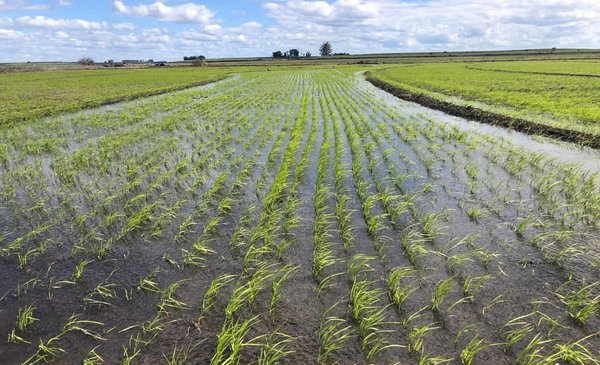Based on a new reality that affects the decisions of the producer, the increase in the rice cultivation area for the next campaign is in doubt, when a few weeks ago the advance was discounted. Even, if the current scenario does not change, there may even be a rebound, with a slight drop in the rice area.
In May, with the harvest just concluded, a new thrust of the rice area was expected to advance by almost 20,000 hectares, up to around 180,000 ha.
At that time Alfredo Lago, president of the Rice Growers Association (ACA), told The Observer that the expectation was of a new progress in the planting area for the 2022/2023 cycle, however, it was necessary to wait for the behavior of key factors: the estimation of production costs, the price of rice and the level of water reserves –He said that a “normal to rainy” winter was necessary–.
Now, in mid-July, Lago said that although the economic equation derived from the last campaign is positive (although not to the same magnitude as that of the previous year’s exercise), “first of all, there is great concern that the price of rice at international is not in the same line in which other agricultural items have been, such as soybeans, wheat, corn, rapeseed and meat.
He added that prices have improved since 2020, but without the explosion that other products had.
The higher logistics costs also affect the accountsfor the cost of sea freight, given that it is true that whoever buys at the destination is paying more than what he paid before, but the exporter is receiving less than what he obtained last year given the above.
“The prices, considering the historical, are not bad, but they did not reach the level of other items,” he said.
Related to that, the costs of many inputs are highly influenced by the value of agricultural commodities“then Fertilizer went up, agrochemicals went up, energy went up and we don’t have the capacity of those other items to face those increases; we have a similar income through the price and a much higher output through costs, around US$ 300 more per hectare”.
In a sector accustomed to achieving high productivity (it comes from a record in 2021 and the second best mark in 2022), “compensating for that on the productivity side is not easy”said.
Today, he commented, the producer in a quick account sees that if he removes 9,000 to 10,000 kilos per hectare and obtains US$220 per hectare, he makes US$2,200 at most, with a cost that is going to be in that environment, then it happens to have a visualization of the business for the coming harvest that “in the best of cases it gives a draw”.
Lago has the expectation that the price of rice “is going to improve, there will be an upward trend, but we are talking about a basic food product that countries want to be cheapit is the way that many have to control not only inflation, but also internal peace and they make an effort so that rice continues to be the cheapest food there can be”.
He also said that the producer has some alternative at hand, such as making soybeans in rice-growing areassomething to which the producer “is grabbing his hand” and that is on the table when, in the case of rice, it is a risk to grow with a perspective of zero or even negative profitability.
Therefore, he affirmed, “maintaining the trend of area growth that we had in the previous two years is going to be very difficult, it is likely that it will come to a standstill and maybe even we will have a few fewer hectares.”
Another key issue is that of water reserves.. “We are well below what we were at this point last year, it has rained now and the reserves are going to improve, but it has to rain above average to generate the necessary water,” he said.
He concluded that although there is a strength, on the side of the high productivity that is obtained if there are no setbacks, “today with that it is not enough to grow.”
the background
The 2021/2022 harvest, the last completed, considered an area of 164 thousand hectares in which there was a productivity of 9,250 kilos per ha and a volume of 1,517 million tons.
The national area with rice cultivation, after a record reached at the end of the 1990s with 205,000 ha, in recent years had a peak of 195,000 ha in 2010/2011 and then, with some occasional rebounds, it normally decreased. up to a floor of 136 thousand ha in 2019/2020. Then there was, in the last two campaigns, two separate growths, to 143 thousand ha first and then to 164 thousand.
Based on a projection made by Uruguay XXI, this year rice exports could reach a value of US$ 497 millionconstituting one of the pillars of the global record that is expected for foreign placements of goods, estimated at US$ 14,000 million.
rice records
205 thousand hectares in 1998/1999
9,400 kilos per ha in 2020/2021
1,631 million tons in 2019/2011


















